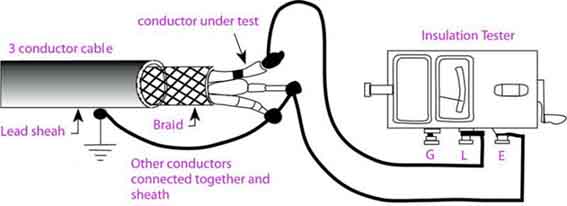Breakdown test of wires and cables
The breakdown test of the cable is to increase the voltage step by step until the insulation breakdown, and obtain the breakdown voltage value of the cable. The purpose of this type of test is to assess the safety margin between the ability of the cable insulation to withstand voltage and the working voltage. AC breakdown electric field strength is one of the important parameters of cable design.
The AC breakdown strength has a great relationship with the boost speed. The continuous boost voltage causes the cable to break down within a few minutes, which is called instantaneous breakdown. There is basically no thermal factor, which is a type of electrical breakdown. Therefore, wire and cable are generally not subjected to this test. The other is a step-by-step boost, starting from a lower voltage (for example, 0.5 to 2 times the working voltage), and maintaining enough working time to make the cable fully generate electricity and heat in this voltage level. Then rise to another voltage level. Ascend step by step until the cable breaks down. The rising voltage of each stage increases step by step according to the percentage of initial pressure. The factor of thermal breakdown is reflected in this test. Such test results have good reference value. It is often used when researching the characteristics of products.
There are many current electrical test methods for cable circuits, and there are different test methods for different voltage levels and different types of power cables. The test methods for oil-impregnated paper insulated cables, plastic insulated cables and XLPE cables are introduced in the article.
The current electrical tests of cable circuits are roughly as follows: DC withstand voltage and leakage current test, power frequency withstand voltage test, insulation resistance, insulating oil test, partial discharge test, 0.1 Hz ultra-low frequency test, frequency resonance test, etc. At present, the power sector has different test methods and test contents for different voltage levels and different types of power cable lines.

The AC breakdown strength has a great relationship with the boost speed. The continuous boost voltage causes the cable to break down within a few minutes, which is called instantaneous breakdown. There is basically no thermal factor, which is a type of electrical breakdown. Therefore, wire and cable are generally not subjected to this test. The other is a step-by-step boost, starting from a lower voltage (for example, 0.5 to 2 times the working voltage), and maintaining enough working time to make the cable fully generate electricity and heat in this voltage level. Then rise to another voltage level. Ascend step by step until the cable breaks down. The rising voltage of each stage increases step by step according to the percentage of initial pressure. The factor of thermal breakdown is reflected in this test. Such test results have good reference value. It is often used when researching the characteristics of products.
There are many current electrical test methods for cable circuits, and there are different test methods for different voltage levels and different types of power cables. The test methods for oil-impregnated paper insulated cables, plastic insulated cables and XLPE cables are introduced in the article.
The current electrical tests of cable circuits are roughly as follows: DC withstand voltage and leakage current test, power frequency withstand voltage test, insulation resistance, insulating oil test, partial discharge test, 0.1 Hz ultra-low frequency test, frequency resonance test, etc. At present, the power sector has different test methods and test contents for different voltage levels and different types of power cable lines.






